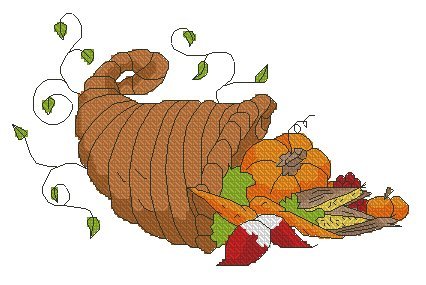After being cooped up inside for more than a year, consumers are ready to get out into the world, interact with their environment, and buy some awesome stuff. That’s why we believe we’ll see a big jump in the popularity of pop-up shops in the coming months (and even years).
And as an ecommerce business owner, pop-up shops present some unique benefits to you: they’re easy to set up and take down, and they don’t require you to rent out expensive long-term real estate to set up a traditional store.
In this article, we’ll explore how you can dip your toes into the world of pop-up shops in 2021. You’ll learn what they are, how to set them up, and see some examples to inspire you into action.
Let’s go.

Don’t wait for someone else to do it. Hire yourself and start calling the shots.
What is a pop-up shop?
If you’re looking for a low-cost and low-commitment way to establish a retail presence, a pop-up shop could be the solution for you.
A pop-up shop—also called a flash retail store—gives emerging online brands the opportunity to sell in a brick-and-mortar setting. The idea behind it is to let customers see, touch, and experience your products.
A pop-up shop can look like a regular store, but many brands use them to create a unique, immersive physical shopping environment. With that in mind, you can open a pop-up shop to add an intangible “wow” factor to your brand.
How much does a pop-up store cost?
The cost of opening a pop-up shop can vary based on the size, duration, and location of your storefront. While there’s no limit to the amount you can spend, it’s possible to set up a short-term pop-up for as little as $2,000.
It’s worth noting that your pop-up startup costs will be significantly lower if you set up in a pop-up mall, like Boxpark Shoreditch. In other locations, the commercial rent price would drive the cost up. For instance, Inkbox, a tattoo parlor, had to pay $8,000 in rent to secure a pop-up space in Toronto’s downtown area. As the world recovers from the pandemic, commercial spaces will likely cost more to rent in the future.
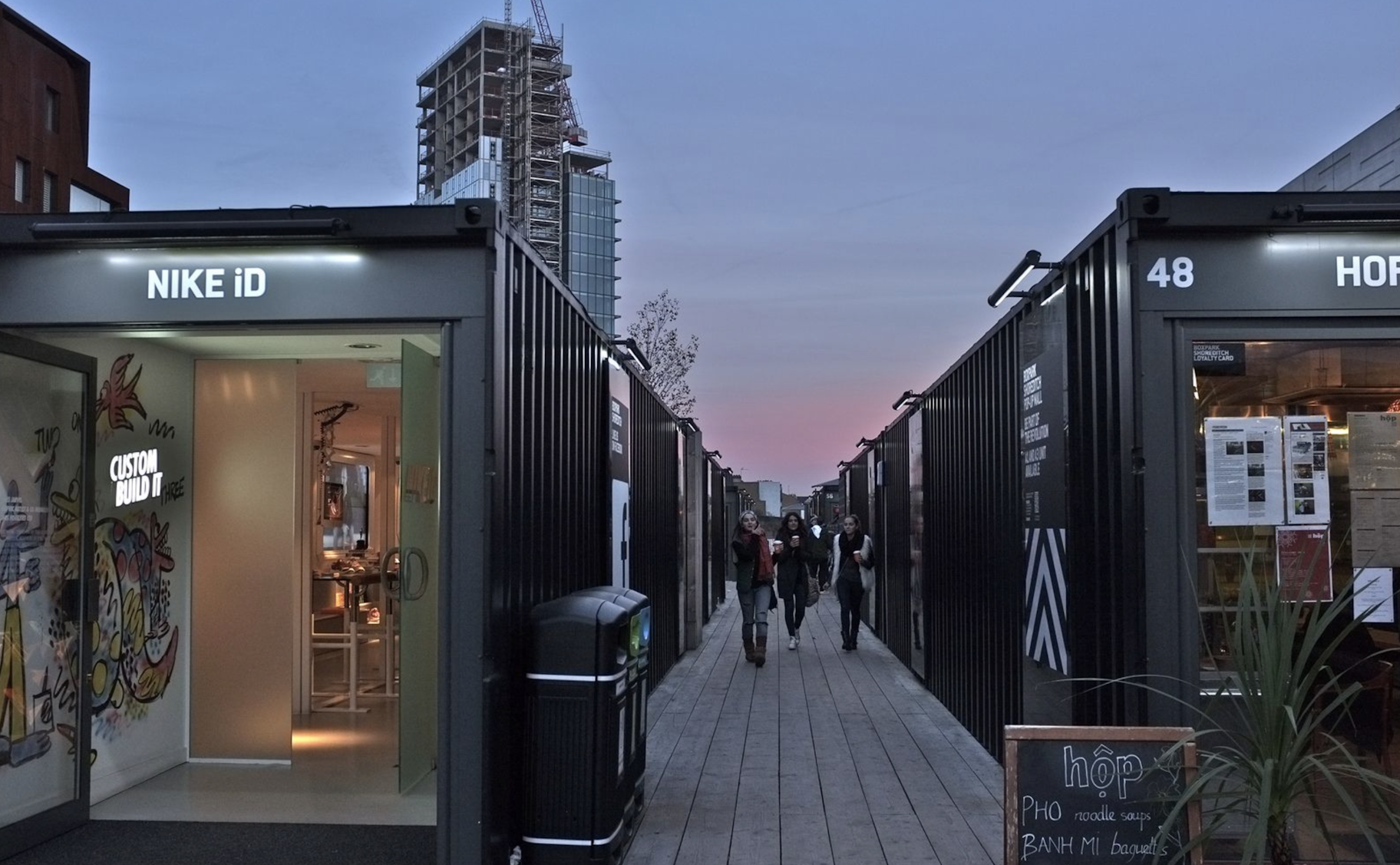
How to pick the perfect pop-up shop space
It’s crucial to find the right space for your pop-up. Begin the search by thinking about what type of space aligns with your brand’s personality and will position you perfectly in front of your target audience. Common options include:
- Vacant storefronts. Vacant storefronts are convenient retail spaces you can customize to suit your brand. If you’re unsure where to look for available spaces, try contacting a local real estate agent.
- Shopping centers/malls. Most malls have booth space, kiosks, and even small stores you can rent temporarily. Though this space can be expensive, it gives you access to a pre-existing audience of regular shoppers and foot traffic.
- Gallery/event space. Event and gallery spaces make it easy to showcase your brand in a creative and eye-catching format. These venues are ideal for events if you’re planning on turning your pop-up store into a memorable occasion.
- Pop-ins. Pop-ins are stalls and small spaces within an existing brick-and-mortar location. When using pop-ins, look for a company to partner with that makes sense for your brand. For instance, a headphone company might “pop in” to a technology store.
If you don’t want to be limited to a single location, consider hiring your own trailer or bus for a mobile pop-up shop. This way, you can set up a sales environment in any location you visit and maximize your reach—you can open up shop at a public festival, park, or any place you think people would be visiting.
How to choose your pop-up location
After determining what kind of pop-up store you’re going to have, you can start deciding on a location. Here’s where it pays to understand your target market and audience. For instance, if you plan on selling skateboards, it makes sense to establish your store close to some local ramps or skate parks. If you’re selling snacks, look for a location known to attract foodies.
Once you have a general spot in mind, think about:
- Nearby retailers and events. Are there any nearby stores selling complementary products in the locations you’re considering? Will you be exposing yourself to a lot of competition? What about competing for attention against events happening in the vicinity?
- Foot traffic. How many people generally walk by the area you’re going to choose? These individuals will be crucial to your potential for sales. Consider visiting the location ahead of time to see how many people drop by.
- Reputation. Does the area you’ve chosen have a good reputation? Are companies found there considered to be high-class and luxurious? Do people always talk about the amazing views or great quality of service they get when they visit the space?
Where to look for pop-up shop venues
Finding venues is much easier when you have the pertinent details of your ideal space in mind. However, you may need to compromise on some factors to find a space that’s both suitable and affordable. Try writing a list of your must-haves and nice-to-haves so you can accurately consider each location’s potential. With your list in hand, try:
- Pop-up shop databases. Visit websites like Pop Up Shops and Storefront to find local listings for potential event space. Many databases let you filter your searches by store size and other factors, so you can quickly refine your options.
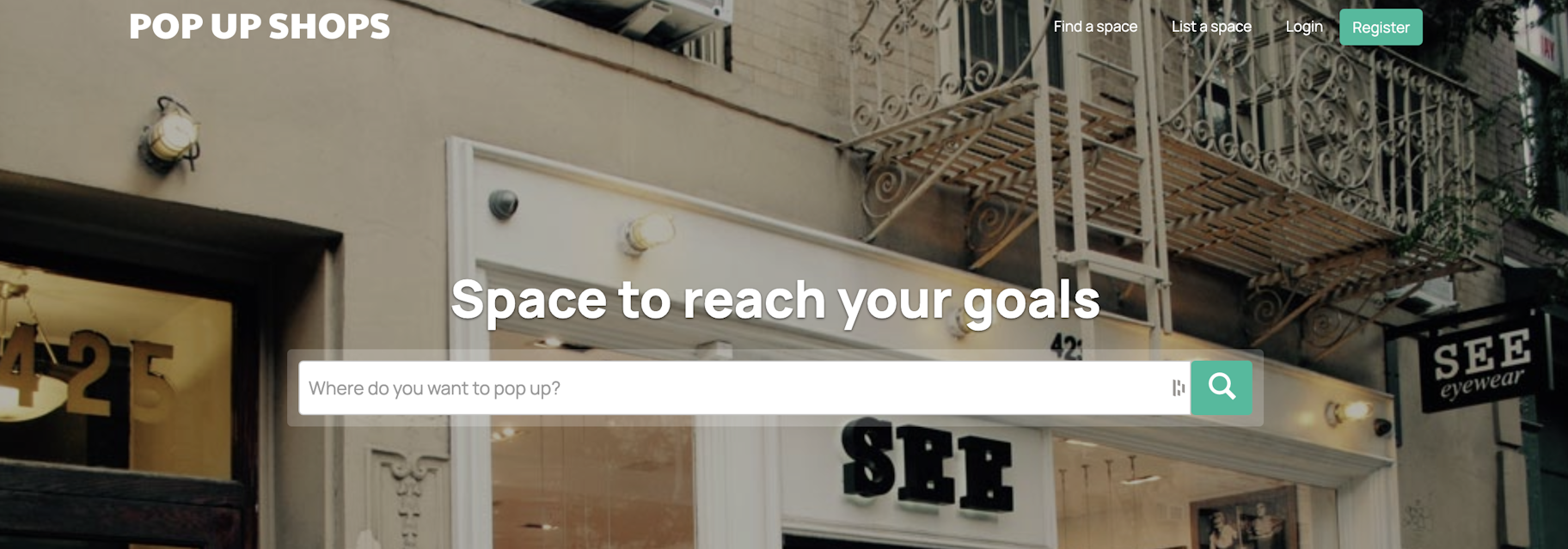
- Contacting locations. If you’re considering a space inside an existing store or establishment, cut out the middleman and contact the owner directly. Be ready to negotiate with the space owner on things like the size of your stall and the number of hours you’ll operate on the shop floor.
- Speaking to realtors and landlords. If you notice any listings in your area for retail spaces or see signs on a shop window, you can contact the realtor or landlord directly for pricing and other information.
Questions to ask before you book a space
Once you find the perfect pop-up space, it’s crucial to learn what exactly you’ll be getting for your money. Find out by asking questions about:
- The rent. Determine the daily, weekly, or monthly rate depending on how long you plan to operate.
- What’s included in the rent. Make a note of specifics like occupancy dates, square footage, and amenities.
- The shop’s layout. Get familiar with the shop’s current layout so you can visualize what your pop-up setup could look like.
- Whether the space can be modified. Find out how much control you have over branding and modifying the space. Can you drill holes and hang banners? What about putting up LED displays or printing signage?
- Who’s liable for damages. Read the fine print on your lease to know who’ll be responsible in the event of a fire, flood, or theft.
- How much of a rental deposit is required. You’ll need to put down a deposit equivalent to a month’s rent in most instances. Be sure to find out when and how you’ll get your deposit back after leaving the space.
Closing the deal on your pop-up shop space
Ready to sign on the dotted line? Before you proceed, make sure to familiarize yourself with the following legal documents:
- Lease. The legal document giving you rights to sell your goods in a specific space for a certain term (length of time). Your lease outlines what you’re allowed to do in the space, how long your rental lasts, and the fees you need to pay.
- Licenses: You may need a license rather than a lease based on the length of your pop-up store and location. A license gives you the authority to use an asset short term.
- Permits: Each region has specific legal regulations and permits requirements. For instance, most cities will require a permit for selling alcohol and food. Check with your real estate agent and the city to ensure you’re compliant with local laws.
- Insurance: Your commercial or business insurance protects your brand and business from anything that might go wrong. You might want to double-check if your location offers insurance to leaseholders as standard.
How to market your pop-up shop
With the legal hoop-jumping and location scouting out of the way, all that’s left for you to do is market your pop-up shop. While finding a location in a place with heavy foot traffic immediately improves your chances of conversions, proper promotion ensures you can attract as many of the right potential customers as possible.
Before pop-up launch
Before you host your pop-up shop–do your research. Get to know your target audience and examine the competition for insights into how you can make your brand stand out. Remember, customers go to a pop-up shop for unique, memorable experiences.
Think about how you’ll price your products to attract customers and what kind of local PR you can get for your event (like newspaper and radio coverage). Other ways to promote yourself include:
- Leveraging Influencer marketing. Connect with local influencers, bloggers, and content creators to help spread information about your upcoming store. Remember to engage plenty of micro-influencers so you can leverage their highly engaged local audience.
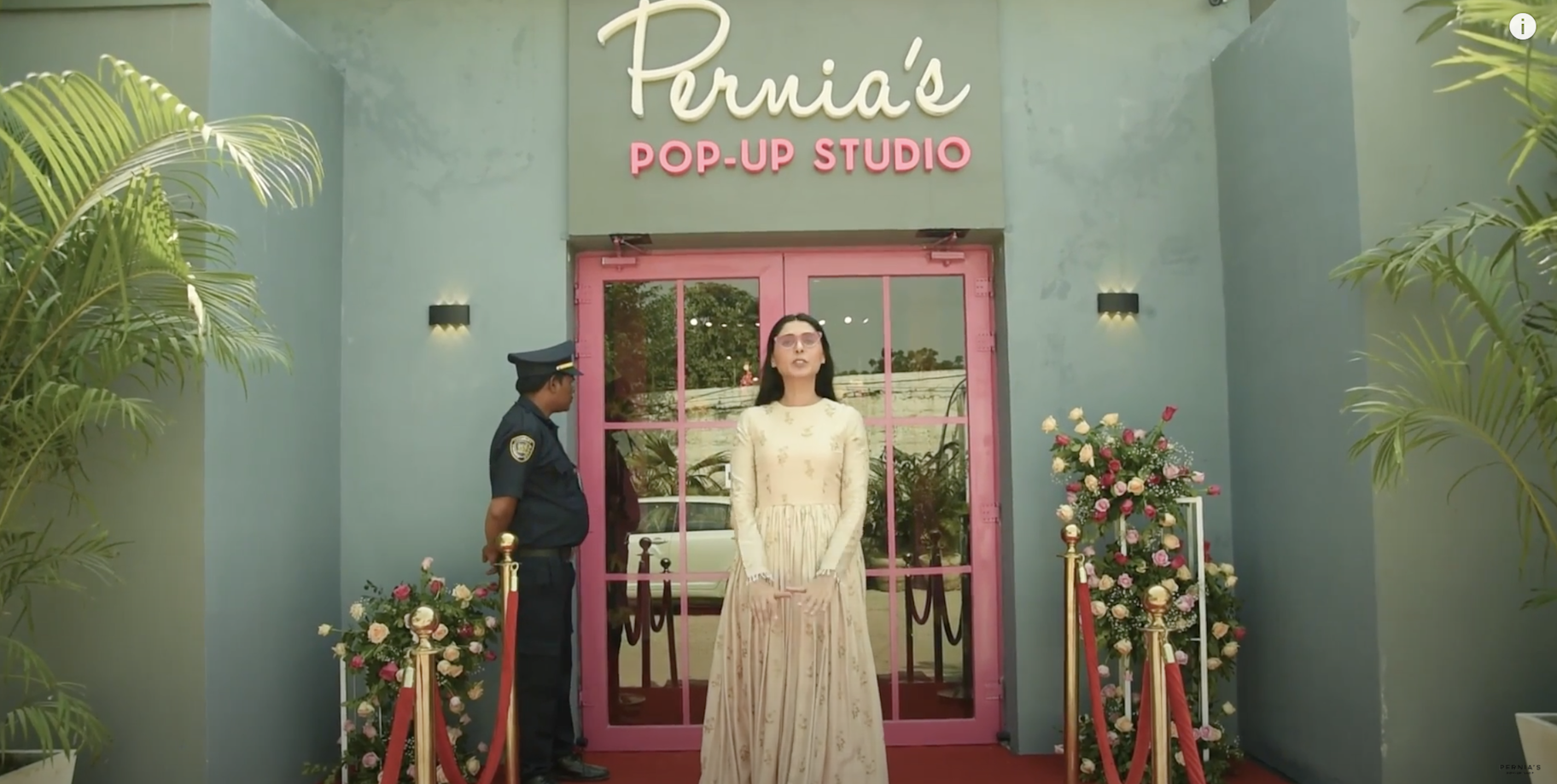
- Creating press packages. Send press packages including pictures of your products, information about your brand, and news about the pop-up store to local news companies. Keep your media pitch short and simple when advertising what you’re offering and invite interested journalists to get in touch with any questions.
- Building buzz on social media. Generate excitement among existing customers on social media. Hosting competitions where customers can enter to win a discount at your event or a free product is a great way to build hype.
During the pop-up
While running your pop-up store, look for ways to keep the momentum going. You can continue working with your influencers, asking them to share photos and videos of them visiting your pop-up store. Other options include:
- Creating user-generated content. Ask customers to share pictures of them at your pop-up store or using your products with a branded hashtag. You could create a selfie wall where people can pose under your brand logo or give people discounts for sharing their location in your store.
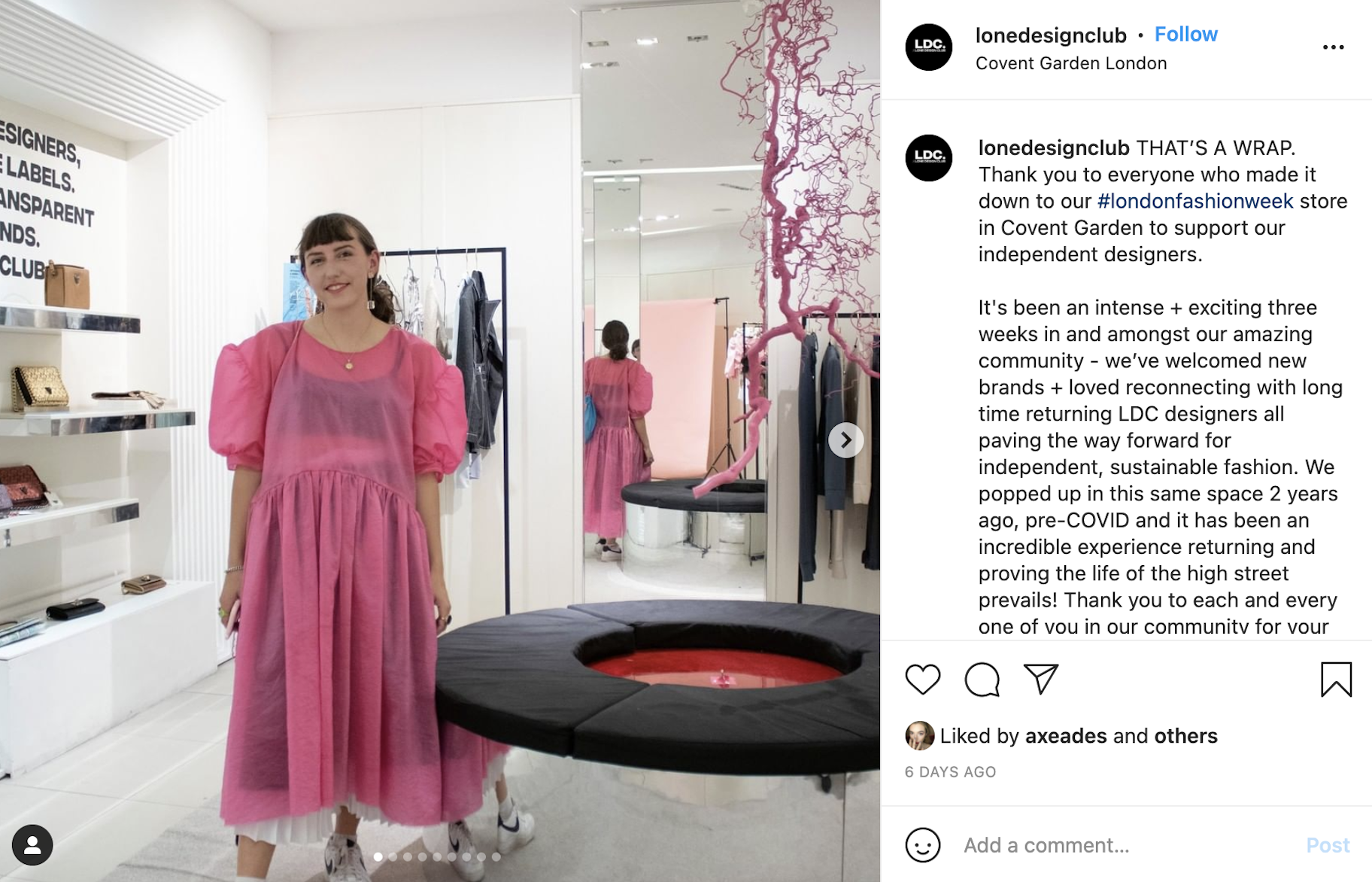
- Engage in co-marketing. Work with surrounding companies in your local area to help generate attention for your store on other social media feeds and blog pages. You could even send freebies to surrounding businesses to get them on your side.
- Getting local celebrities involved. Invite local celebrities and social names to come along and get involved with your event. This will help to build a community around your brand and pull in the attention of local customers.
After the pop-up
The buzz about your store shouldn’t die down when your pop-up is over. Below are some tips you can leverage to keep the conversation alive:
- Email customers. Used point-of-sale to collect emails? Great—now re-introduce your online brand to customers and drop a hint of when you might set up a pop-up next.
- Ask for feedback. Ask your customers what they loved about the pop-up with polls and surveys. This keeps the conversation going while also collecting valuable feedback about what you can do to improve your future pop-up events.
Examples of pop-up shops to get your ideas flowing
If you’re unsure how you might want your pop-up shop to look, or want to learn from the pros, we’ve got just the thing. Check out these examples from savvy entrepreneurs who are nailing this whole pop-up shop thing.
1. Pantone Cafe
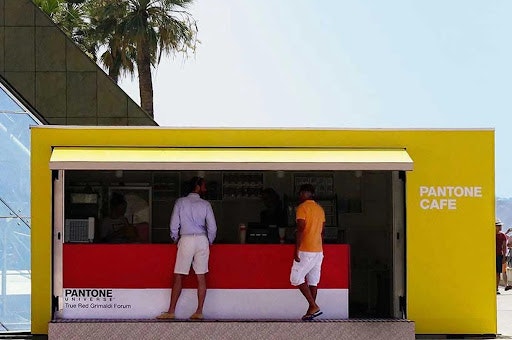
Pantone, a global authority on color and color systems, stayed true to its name when it set up a color café in Monaco. Customers could order color-coded treats named after the company’s Pantone color system.
For example, Pantone 16-1731 is a pink shade—and when customers ordered it, they got a tasty scoop of strawberry ice cream. For the brown swatch Pantone 19-1625, customers received an éclair glazed with chocolate of the same shade.
This pop-up was a fun, creative, and whimsical way to celebrate the company’s work and achievements.
2. TopShelf Boutique
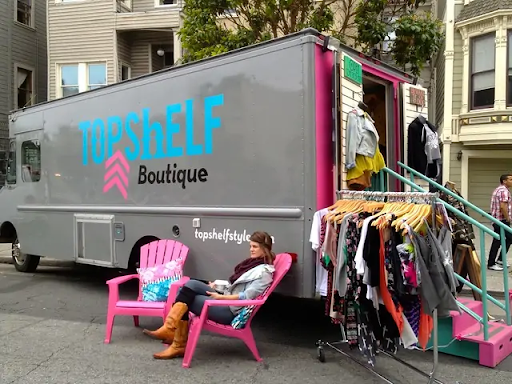
Women’s clothing boutique TopShelf has mastered the art of the pop-up shop by going mobile. The boutique’s creator, Christina Ruiz, is single-handedly responsible for San Francisco’s first-ever fashion truck.
With this brilliant idea, she’s able to cruise her way through markets, fairs, and outdoor events of all kinds. And her on-the-go presence, coupled with her trendy designs, have allowed her to gather a strong, loyal fan base in California’s Bay Area.
Naturally, this pop-up shop idea will require investment in terms of getting a truck. So if you’re just starting out and feel like this is a big spend, you can start with a more temporary arrangement to prove your pop-up idea works.
3. Solve
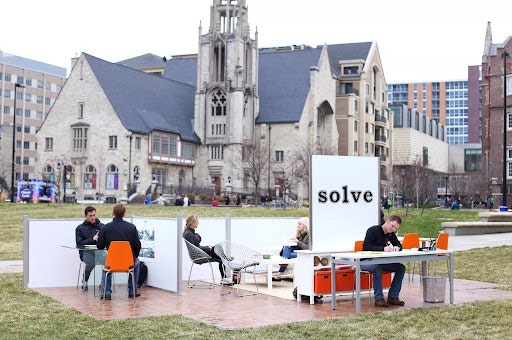
This is an example that shows you don’t have to sell physical products to run a successful pop-up shop. Solve, a creative agency based in Minneapolis, Minnesota, took a fresh and clever approach to hiring interns for the summer.
The company built a mini “office” where students and young professionals could win an on-the-spot interview for a position. They completed a five-minute challenge based on their interest area, and the winner snagged the interview.
Service-based businesses can take a lesson in ingenuity here.
Jump on the pop-up shop trend in 2021
For many businesses looking to create ways to reconnect with their customers in 2021 and beyond, pop-up shops will bring amazing results.
These shops give you the ability to have an engaging physical presence—without investing thousands of dollars to rent and design a retail space.
Plus, with the added element of mobility, you’ll be able to introduce your brand to different events and audiences, giving you a unique and powerful way to explore your options and find the perfect selling environment for your business.
Want to learn more?
- Moving Your Business Online: How to Get Your Offline Online
- How to Stop Procrastinating: 11 Strategies to Unlock Your Potential
- Guerrilla Marketing: What It is and How to Use It for Ecommerce
- The 10 Greatest Word of Mouth Marketing Strategies to Utilize




